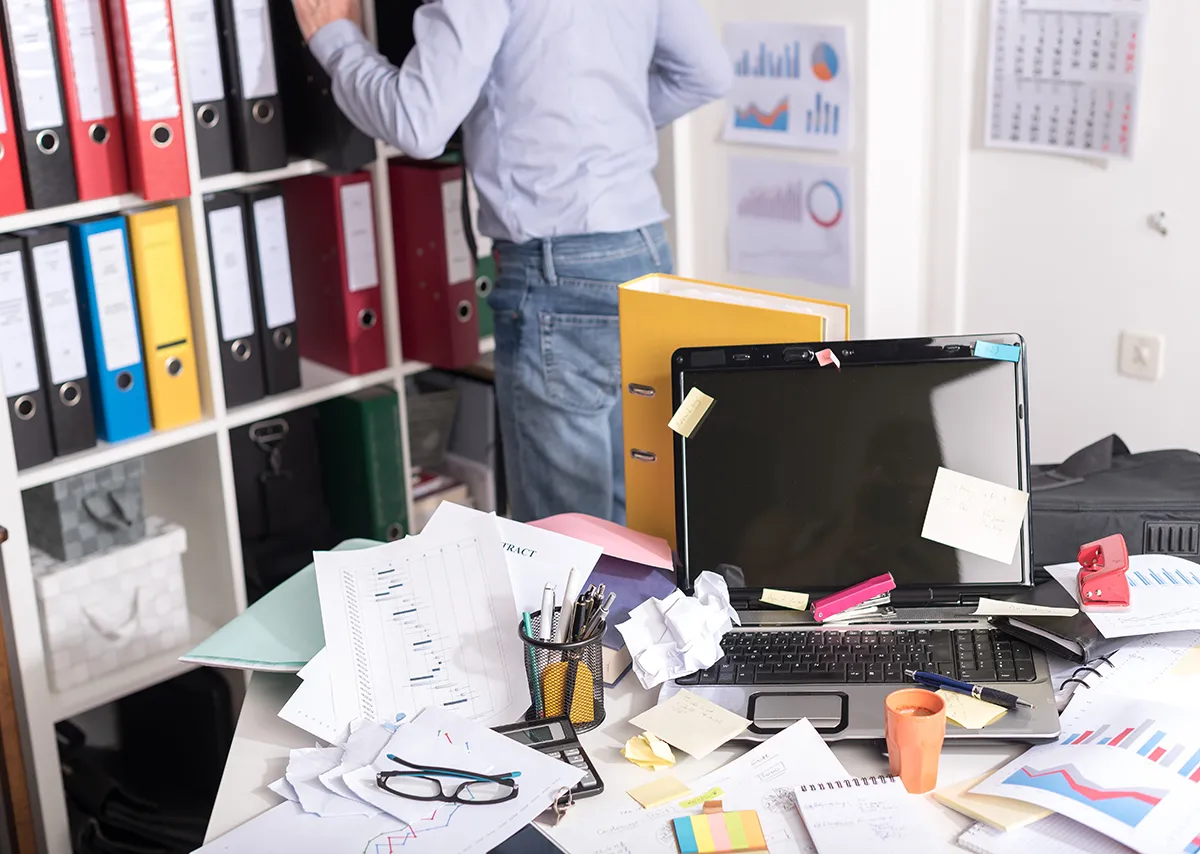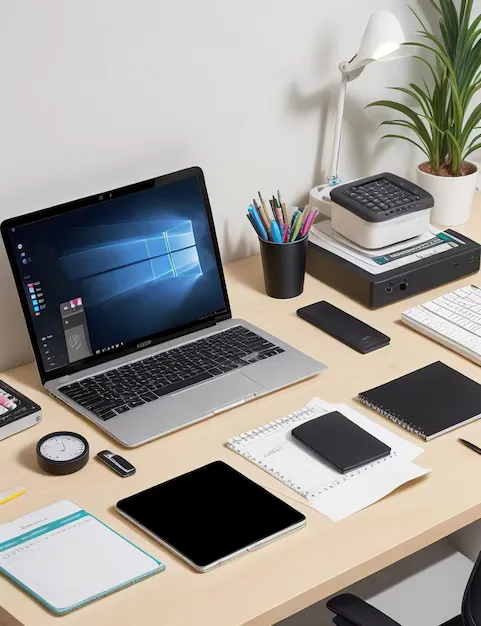
Let’s face it - we’ve all been there. You sit down at your desk, ready to tackle the day’s tasks, only to find yourself drowning in a sea of papers, tangled cords, and random knick-knacks.
A know firsthand how a cluttered desk can impact your productivity and peace of mind. But fear not! I’ve learned a thing or two about desk optimization, and I’m here to share my hard-earned wisdom with you.
So, grab a cup of coffee (and make sure you have a clear spot to put it down), and let’s dive into the world of desk optimization!
Creating Your Desk Optimal Layout
Now that we’ve decluttered, it’s time to create a layout that works for you. Remember, there’s no one-size-fits-all solution - the best arrangement is the one that supports your work style.

| Creating Your Desk Optimal Layout | |
|---|---|
| 1. Identify Your Prime Real Estate | |
| - The area directly in front of you and within easy reach is your desk’s prime real estate. Reserve this space for your most frequently used items. | |
| 2. Create Zones | |
| - Computer zone | - Writing zone |
| - Reference zone | - Supply zone |
| 3. Prioritize Ergonomics | |
| - Arrange items to support good posture and reduce strain: | - Position your monitor at eye level |
| - Keep your keyboard and mouse within easy reach | |
| - Use a document holder to reduce neck strain when reading papers | |
| 4. Manage Your Technology | |
| - Tame the tech jungle on your desk: | - Use cable ties or clips to manage cords |
| - Consider a USB hub to reduce cable clutter | |
| - Position your devices for easy access and optimal use | |
| 5. Incorporate Storage Solutions | |
| - Utilize desk organizers, trays, and drawer dividers to keep items tidy and accessible. |
Maintaining Your Optimized Desk: Daily Habits for Long-Term Success
Optimizing your desk is great, but keeping it that way is the real challenge. Here are some daily habits to help maintain your newly organized space:
| Maintaining Your Optimized Desk: Daily Habits for Long-Term Success | |
|---|---|
| 1. The Two-Minute Rule | |
| - If a task will take less than two minutes (like filing a paper or putting away a book), do it immediately. | |
| 2. Clear Your Desk at the End of Each Day | |
| - Spend the last few minutes of your workday tidying up. You’ll thank yourself in the morning! | |
| 3. Use the “One In, One Out” Rule | |
| - For every new item you bring to your desk, remove an old one. | |
| 4. Regular Mini-Declutter Sessions | |
| - Set aside time each week for a quick desk tidy-up. | |
| 5. Reassess Regularly |
Your needs may change over time. Periodically review your desk setup and make adjustments as necessary.
Tech Tools for Desk Optimization
In our digital age, there are plenty of tech tools that can help optimize your physical desk space:
1. Digital Note-Taking Apps
Apps like Evernote or OneNote can help reduce paper clutter.
2. Cloud Storage
Using cloud storage can help you keep fewer files on your physical desk.
3. Cable Management Solutions
Look for tech solutions like wireless chargers or all-in-one docking stations to reduce cable clutter.
4. Smart Desk Accessories
Consider items like smart lamps that adjust based on the time of day or smart planters that remind you to water your desk plant.
Tips for Organizing Your Desk
| Tips for Organizing Your Desk | Explainer |
|---|---|
| 1. Declutter Regularly | |
| - Remove Unnecessary Items | Periodically review the items on your desk and remove anything that is no longer needed. A clutter-free desk improves focus and efficiency. |
| - Keep Only Essentials | Limit the items on your desk to essentials that support your work. Avoid overloading your workspace with items that are not actively used. |
| 2. Use Cable Management | |
| - Cable Organizers | Cable organizers help manage and tidy up cords from your computer and accessories. They prevent tangling and keep your desk looking neat. |
| - Cable Clips | Use cable clips to secure cables to the back or underside of your desk. This prevents cables from cluttering your workspace and reduces the risk of accidental unplugging. |
| 3. Create Zones | |
| - Work Zone | Designate a specific area of your desk for primary work tasks. This zone should include your computer, keyboard, and other tools you use frequently. |
| - Personal Zone | Keep personal items, like photos and plants, in a separate area to create a balanced workspace. This helps maintain a clear boundary between work and personal space. |
| 4. Optimize Ergonomics | |
| - Adjust Chair and Desk Height | Ensure your chair and desk are adjusted to the proper height to promote good posture. Your feet should be flat on the ground, and your elbows should be at a 90-degree angle when typing. |
| - Use an Ergonomic Mouse and Keyboard | Consider using an ergonomic mouse and keyboard to reduce strain on your hands and wrists. Ergonomic designs can prevent repetitive strain injuries and improve comfort. |
The Cluttered Genius: Albert Einstein
Albert Einstein, the renowned physicist, was known for his groundbreaking theories and his distinctive approach to life and work.
 His desk was famously cluttered, with piles of papers, books, and personal items scattered around.
His desk was famously cluttered, with piles of papers, books, and personal items scattered around.
Einstein’s desk was often covered with stacks of papers, drafts, and notebooks. This clutter was a testament to his active mind and constant engagement with complex problems.
His desk was surrounded by a variety of books and scientific journals, reflecting his voracious appetite for knowledge and continuous learning. Despite the mess, Einstein had personal items like photos and mementos, which provided comfort and inspiration amidst his chaotic workspace.
Conclusion
Remember, the goal isn’t perfection, but progress. Your optimized desk should work for you, not the other way around.
Here’s to your newly optimized desk and all the amazing work you’ll do there. You’ve got this!
Stay up to date
Get notified when I publish something new, and unsubscribe at any time.